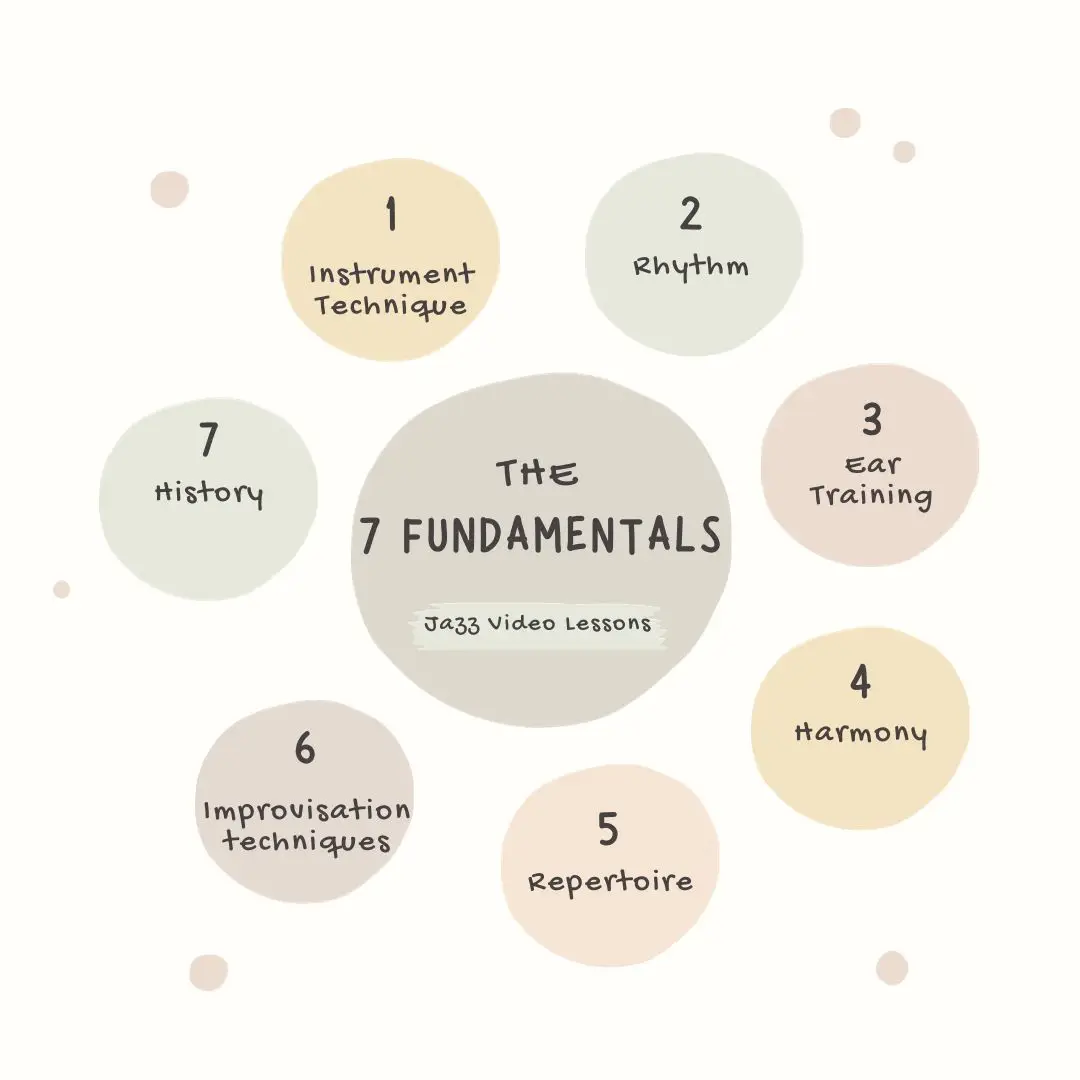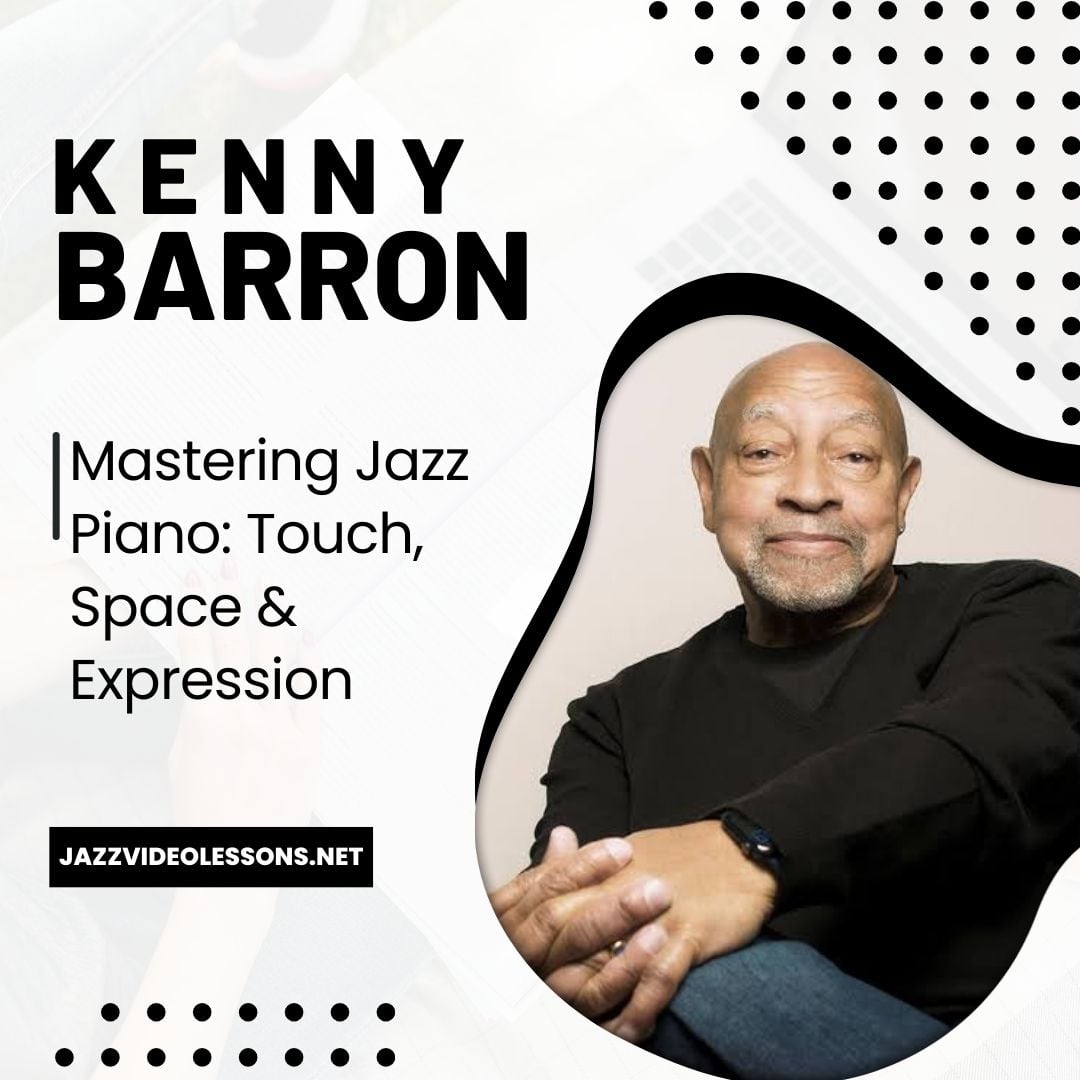Introduction
Jazz is a rich, complex art form that captivates musicians and listeners alike. Whether you’re a beginner or an advanced player, mastering the core principles of jazz is essential to developing your unique voice and musical creativity. This comprehensive guide explores seven fundamental aspects of jazz musicianship—as shared by a seasoned jazz teacher and performer—which will help you build a solid foundation, advance your skills, and deepen your understanding of the genre.
Why Fundamentals Matter in Jazz
In jazz, fundamentals form the backbone of every great performance. Just as athletes practice basic drills before mastering complex moves, jazz musicians must consistently return to essentials: the clarity of sound, rhythmic precision, harmonic understanding, and much more. This guide distills years of teaching experience across various levels—from beginners to advanced professionals—into seven core categories that will support your growth no matter your current skill level.
1. Instrument Technique and Sound: Your Musical Voice
Your instrument technique is the foundation of your entire journey in jazz. But more than just technical skill, cultivating your sound is paramount. Your sound is your musical voice; it is how listeners recognize you and connect emotionally with your playing. Legendary musicians like John Coltrane demonstrate this with phrases as simple as the C major scale, where their unique sound elevates the notes into something unforgettable.
Key Concepts:
- Prioritize your sound development over technical flashiness.
- Use triads and arpeggios to build melodic ideas.
- Explore scales with passing tones but start vertically with chord tones.
2. Rhythm: The Heartbeat of Jazz
Rhythm is the next crucial fundamental, closely tied to sound in importance. Solid rhythmic feel not only grounds your playing but also makes it compelling and alive. Creativity in rhythm helps to communicate your musical ideas more effectively—whether swinging hard or experimenting with odd meters.
Tips for Developing Rhythm:
- Practice articulation exercises to develop precision.
- Use rhythmic variations on scales to practice coordination (e.g., jazz articulation guides).
- Understand and internalize common jazz progressions rhythmically (e.g., 2-5-1, backdoor dominants).
- Take the Rhythm Mastery course
- Take the Rhythmic Considerations in Improvisation course
3. Ear Training: Recognizing Intervals, Chords, and Progressions
A refined ear enables you to adapt quickly, improvise effectively, and communicate with other musicians intuitively. Good relative pitch is sufficient for most musicians, allowing you to identify chord qualities—major, minor, dominant—and recognize intervals and common progressions.
Practice Areas:
- Recognize interval distances from seconds up to octaves.
- Identify and distinguish chord types and their tensions.
- Listen deeply to progressions such as 2-5-1, secondary dominants, and backdoor dominants.
4. Harmony: Understanding Chord Functions and Progressions
Harmony underpins jazz, offering the structural framework on which melodies and solos are built. Understanding the tonal center and how chords relate—tonic, subdominant, and dominant—is essential. Mastery of chord substitutions and secondary dominants expands your creative palette.
Core Ideas:
- Learn color-coded harmonic functions to visualize progressions.
- Study common standards through their chord progressions.
- Use voice leading to minimize hand movement and create smooth melodic lines within chord changes.
5. Repertoire: Building a Shared Musical Language
Learning and internalizing jazz standards provides a common ground for communication with other musicians worldwide. Well-known standards come from Broadway musicals, blues, bebop, and modern jazz. Having a diverse repertoire prepares you for jam sessions, gigs, and collaborators.
Repertoire Insights:
- Develop lists of must-know standards organized alphabetically or by style.
- Analyze milestone albums like Kind of Blue and Blue Train to discover subtle interpretative details.
- Practice melody, harmony, and bass lines of standards to internalize their structures.
6. Improvisation Techniques: Vertical and Horizontal Approaches
Improvisation in jazz combines vertical (chord tones, arpeggios) and horizontal (scale passages, melodic lines) thinking. Starting with triads as building blocks allows a more manageable approach before adding complexity through extended chords and bebop vocabulary.
Methods To Explore:
- Practice improvising with triads and voice leading for melodic coherence.
- Progress to seventh chords, tetrads, and eventually scale-based phrases.
- Study bebop phrasing and apply rhythmic creativity within improvisation.
7. Jazz History and Listening: Context for Your Playing
Understanding the history and evolution of jazz enriches your musical expression. Listening and analyzing recordings reveals stylistic nuances and practical approaches from jazz masters, helping you develop your own style.
Historical Study Tips:
- Familiarize yourself with landmark recordings and associated artists.
- Investigate how musicians innovated with harmony, rhythm, and phrasing.
- Incorporate stylistic elements from different eras to diversify your playing.
Applying the Fundamentals: Examples and Exercises
Triads and Voice Leading
Voice leading refers to smoothly connecting chords by moving individual notes minimally. For example, moving from D minor to G major to C major efficiently retains common tones, making transitions fluid and melodic. Practicing triads with these techniques helps develop harmonic understanding and ear training simultaneously.
Articulation and Rhythmic Variations
Using scale exercises with different articulations and rhythms—the jazz articulation guide—sharpens precision and enhances swing feel. These exercises also simulate harmonic progressions, integrating rhythm with harmonic awareness.
Advanced Triad Combinations
Exploring triads on complex chord changes, such as in Stella by Starlight, trains your ear and creativity. Combining triads around transposition cycles (e.g., major thirds) generates angular, interesting lines while maintaining harmonic coherence.
Why Sound and Rhythm Are Your Top Priorities
No matter how many advanced improvisation techniques you master, if your sound lacks quality or your rhythm falters, your playing will struggle to engage listeners. Icons like Coltrane, Chris Potter, and Ben Wendel illustrate this with their ability to make even a simple scale sound beautiful through their unique tone and rhythmic mastery.
Practicing Fundamentals Every Day
Fundamentals are not a phase but a lifelong practice. Like athletes repeating basic drills, jazz musicians revisit essential skills daily to maintain and improve their artistry. Use a balanced routine covering:
- Instrument technique and sound production
- Rhythmic exercises and articulation
- Ear training with intervals and progressions
- Harmony studies through repertoire
- Improvisation practice starting with triads
Conclusion: Integrating Knowledge for Musical Growth
The seven jazz fundamentals—instrument technique, sound, rhythm, ear training, harmony, repertoire, improvisation, and history—are interconnected aspects of your growth as a musician. Practicing and understanding each area uniformly will help you craft your voice, navigate changes effortlessly, and express yourself creatively across genres and styles.
Frequently Asked Questions (FAQ)
Q1: Do I need perfect pitch to be a good jazz musician?
No. While perfect pitch can be helpful, strong relative pitch and harmonic understanding are sufficient and more common among professionals.
Q2: How important is repertoire learning?
Extremely important. A solid repertoire enables communication, jam session readiness, and insight into jazz forms.
Q3: How often should I practice fundamentals?
Daily practice of fundamentals is ideal. Consistency ensures gradual improvement and retention.
Q4: Should I copy jazz masters or focus on original ideas?
Start by copying masters to internalize effective techniques and sound. Later, develop your own voice and innovate.
Mastering these fundamentals will set you on the path to becoming a confident, expressive jazz musician capable of captivating audiences with your sound, rhythm, and creativity. Keep practicing, stay curious, and enjoy the journey!





